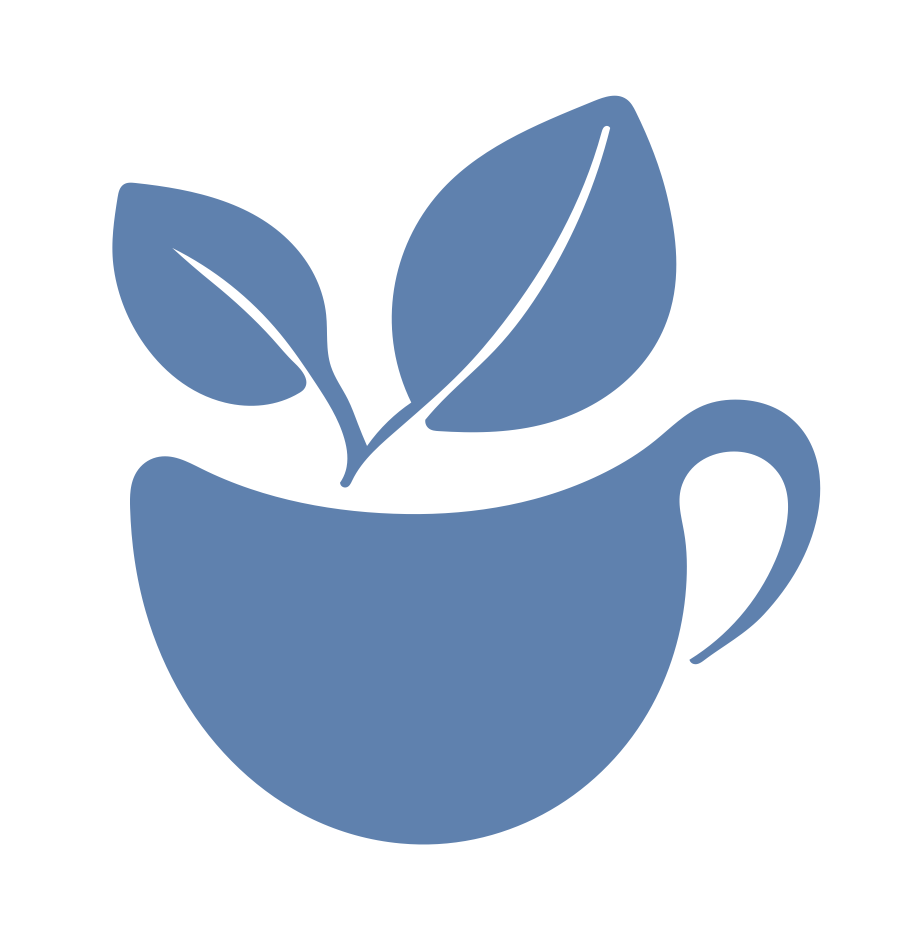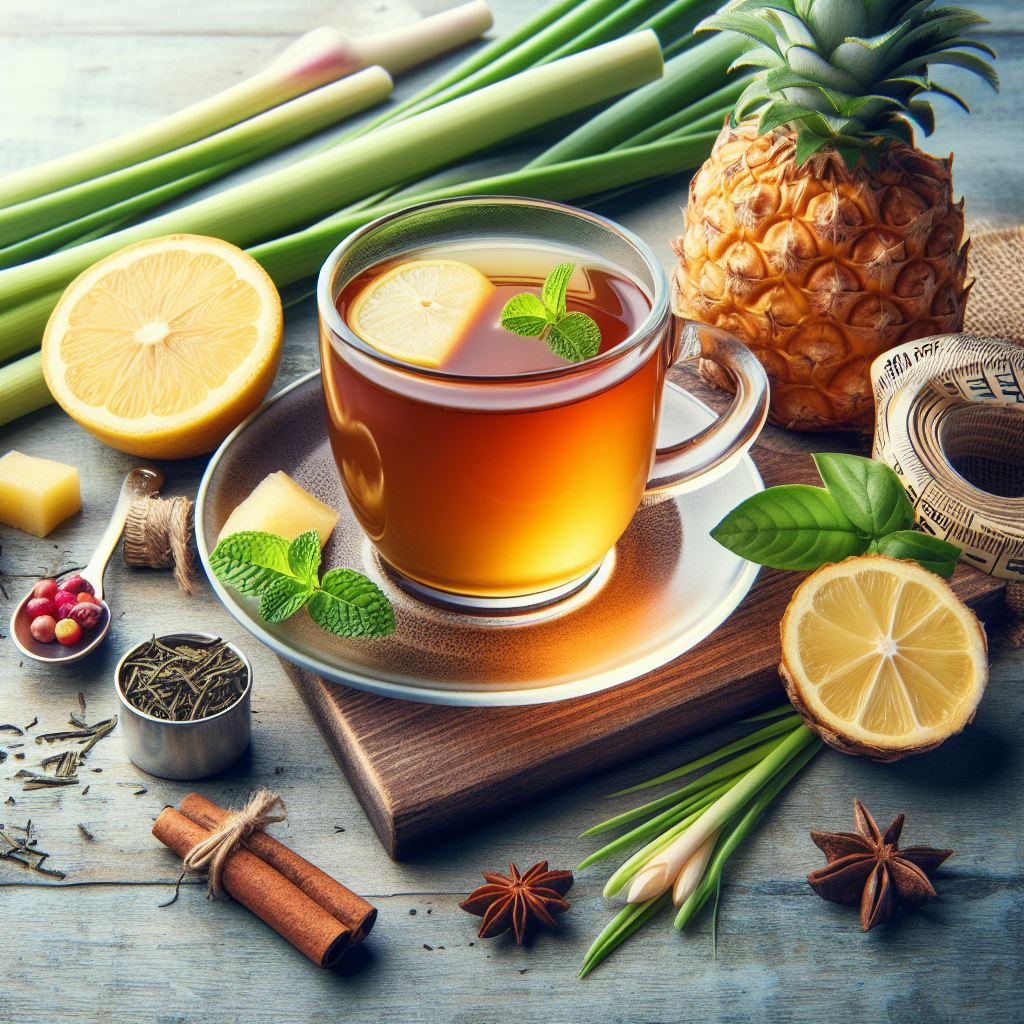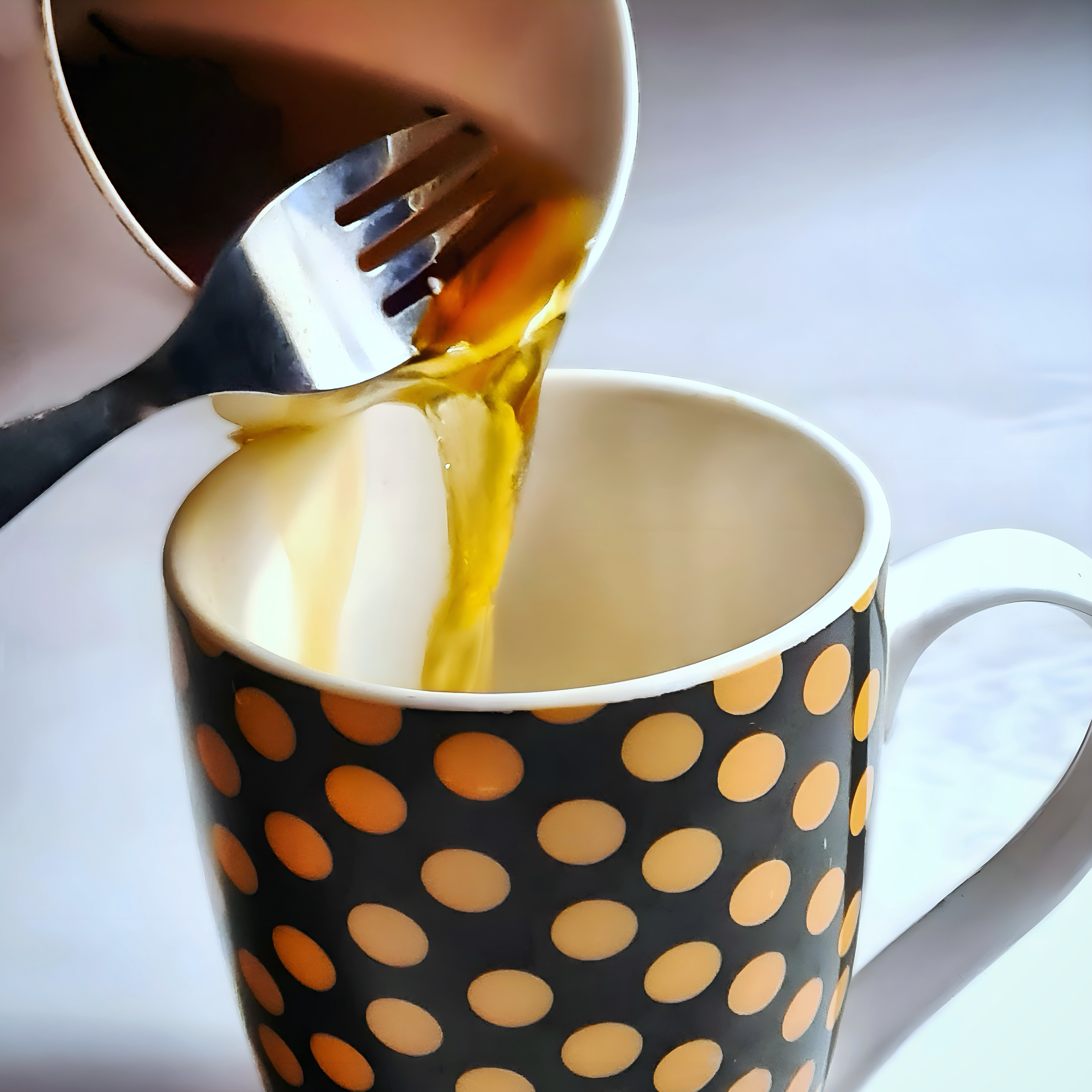Tea is one of the most popular beverages in the world, and for good reason. It offers a range of health benefits, from boosting immunity to reducing stress. But did you know that tea can also be a great source of energy? Whether you need a morning wake-up call, an afternoon revitalization, or a late-night boost, tea can help you achieve your goals. In this blog post, we will explore how you can energize your tea with natural ingredients, functional additions, and mindful rituals. Let’s get started!

Understanding the Basics
Before we dive into the ways to enhance your tea’s energy-boosting potential, let’s first understand some of the basics of tea brewing and consumption.
The Caffeine Factor
One of the main factors that affects the energy level of tea is caffeine. Caffeine is a natural stimulant that can improve alertness, mood, and performance. However, not all teas have the same amount of caffeine. Generally speaking, black tea has the highest caffeine content, followed by oolong, green, and white tea. Herbal teas are usually caffeine-free, unless they contain other caffeinated ingredients like yerba mate or guarana.
The amount of caffeine in tea also depends on how it is brewed. Factors such as water temperature, steeping time, and tea quantity can influence the caffeine extraction and energize your tea. The hotter the water, the longer the steeping time, and the more tea leaves used, the more caffeine will be released into the cup.
To give you an idea of how much caffeine is in different types of tea, here is a comparison chart that shows the average caffeine content per 8 oz cup:
| Tea Type | Caffeine Content (mg) |
|---|---|
| Black Tea | 40-70 |
| Oolong Tea | 30-50 |
| Green Tea | 25-45 |
| White Tea | 15-30 |
| Herbal Tea | 0-5 |
The Mindful Steeping Process to Energize Tea
Another factor that affects the energy level of tea is the steeping process. Steeping is the act of soaking tea leaves in hot water to extract their flavor and aroma. However, steeping is not just a mechanical process; it is also a mindful one. By paying attention to the water temperature, steeping time, and tea quantity, you can optimize your tea experience and enjoy its full benefits.
Different types of tea require different brewing parameters to bring out their best qualities. Here are some general guidelines for steeping different tea varieties:
| Tea Type | Water Temperature (°C) | Steeping Time (minutes) |
|---|---|---|
| Black Tea | 90-100 | 3-5 |
| Oolong Tea | 80-90 | 3-5 |
| Green Tea | 70-80 | 2-3 |
| White Tea | 65-75 | 2-3 |
| Herbal Tea | 90-100 | 5-10 |
You can also adjust these parameters according to your personal preference and taste. For example, if you want a stronger flavor and more caffeine, you can use more tea leaves or steep for longer. If you want a lighter flavor and less caffeine, you can use less tea leaves or steep for shorter.
Exploring Natural Boosters to Energize your Tea

Now that we have covered the basics of tea brewing and consumption, let’s explore some natural ingredients that can boost your tea’s energy level even further. These ingredients are easy to find and add to your tea, and they offer various benefits for your health and well-being.
Power Herbs and Spices
One way to energize your tea is to add some herbs and spices that have stimulating properties. These ingredients can enhance your tea’s flavor and aroma, as well as provide antioxidants, anti-inflammatory agents, and other nutrients. Here are some examples of energizing herbs and spices that you can try:
- Ginger: Ginger is a spicy root that can warm up your body and increase blood circulation. It can also help with digestion, nausea, and colds.
- Ginseng: Ginseng is a root that can improve mental clarity, memory, and mood. It can also help with stress, fatigue, and immunity.
- Peppermint: Peppermint is a minty herb that can refresh your senses and invigorate your mind. It can also help with headaches, congestion, and digestion.
- Cinnamon: Cinnamon is a sweet spice that can stimulate your metabolism and regulate your blood sugar levels. It can also help with inflammation, infection, and cholesterol.
To incorporate these ingredients into your tea blends, you can either use fresh or dried forms, or buy ready-made tea bags that contain them. You can also experiment with different combinations and proportions to create your own custom blends.
Refreshing Citrus Infusions
Another way to energize your tea is to add some citrus fruits that have refreshing properties. These fruits can add a burst of flavor and vitamin C to your tea, as well as help with detoxification, hydration, and alkalization. Here are some examples of citrus fruits that you can try:
- Lemon: Lemon is a sour fruit that can cleanse your palate and brighten your mood. It can also help with digestion, infection, and weight loss.
- Orange: Orange is a sweet fruit that can boost your immunity and energy levels. It can also help with skin health, vision, and blood pressure.
- Grapefruit: Grapefruit is a bitter fruit that can stimulate your appetite and metabolism. It can also help with cholesterol, inflammation, and kidney stones.
To add these fruits to your tea, you can either use fresh or dried forms, or buy ready-made tea bags that contain them. You can also use different parts of the fruits, such as the juice, the zest, or the slices. Here are some creative ideas for adding citrus to your tea:
- Squeeze some lemon juice into your black tea for a classic lemon tea.
- Grate some orange zest into your green tea for a fragrant orange tea.
- Slice some grapefruit and add it to your white tea for a tangy grapefruit tea.
You can also mix and match different citrus fruits to create your own unique infusions.
Supercharging with Functional Additions
If you want to take your tea’s energy level to the next level, you can try adding some functional additions that have powerful effects on your body and mind. These additions are usually derived from natural sources, but they have been processed or concentrated to enhance their potency. They can provide a range of benefits, from increasing stamina to reducing stress.
Nutritious Superfoods to Energize Tea

One category of functional additions is superfoods. Superfoods are foods that have exceptionally high nutritional value and health benefits. They are rich in antioxidants, vitamins, minerals, and other phytochemicals that can support various bodily functions and prevent diseases. Here are some examples of superfoods that you can add to your tea:
- Matcha: Matcha is a finely ground powder made from green tea leaves. It contains more caffeine and antioxidants than regular green tea, as well as amino acids like L-theanine that can promote relaxation and focus.
- Maca: Maca is a root vegetable that grows in the Andes mountains. It contains various nutrients like iron, calcium, and zinc, as well as adaptogens that can help balance hormones and mood.
- Spirulina: Spirulina is a blue-green algae that grows in freshwater lakes. It contains high amounts of protein, chlorophyll, and beta-carotene, as well as anti-inflammatory and immune-boosting properties.
To integrate these superfoods into your tea preparations, you can either use powder or liquid forms, or buy ready-made tea bags that contain them. You can also blend them with other ingredients like milk, honey, or fruit to create delicious smoothies or lattes.
Energize your Tea With the Power of Adaptogens
Another category of functional additions is adaptogens. Adaptogens are herbs or mushrooms that can help the body adapt to stress and restore balance. They can modulate the activity of the nervous system, the endocrine system, and the immune system, as well as improve mental and physical performance. Here are some examples of adaptogens that you can combine with your tea:
- Ashwagandha: Ashwagandha is an herb that originates from India. It can help reduce anxiety, depression, and insomnia, as well as enhance memory, cognition, and libido.
- Rhodiola: Rhodiola is a plant that grows in cold regions like Siberia. It can help increase energy, endurance, and resilience, as well as protect against oxidative stress and inflammation.
- Holy Basil: Holy basil is an herb that is sacred in Hinduism. It can help lower blood pressure, blood sugar, and cortisol levels, as well as boost immunity and mood.
To incorporate these adaptogens into your tea blends, you can either use fresh or dried forms, or buy ready-made tea bags that contain them. You can also experiment with different dosages and timings to find what works best for you.
Tea Rituals for Energy Enhancement
The last way to energize your tea is to create rituals around your tea consumption that can enhance its effects on your body and mind. Rituals are actions or behaviors that are performed regularly and intentionally to achieve a certain purpose or outcome. They can help you create structure, meaning, and connection in your life.
Morning Wake-Up Call

One ritual that you can create around your tea consumption is a morning wake-up call. This ritual involves choosing a tea that can provide a refreshing boost for the start of your day. You can also incorporate some morning rituals and routines that can accompany your tea consumption and help you wake up your body and mind.
Some of the ideal tea choices for a morning boost are:
- Black tea: Black tea is the most caffeinated type of tea, and it can provide a strong and stimulating effect. It can also improve your alertness, concentration, and mood. Some examples of black teas that are great for the morning are English breakfast, Earl Grey, and Assam.
- Green tea: Green tea is a lighter type of tea, but it still has a moderate amount of caffeine. It can also provide antioxidants, anti-inflammatory agents, and amino acids like L-theanine that can promote relaxation and focus. Some examples of green teas that are great for the morning are sencha, matcha, and jasmine.
- Yerba mate: Yerba mate is not technically a tea, but a herbal infusion made from the leaves of a South American plant. It has a high amount of caffeine, as well as other compounds that can enhance your energy, metabolism, and mood. Some examples of yerba mate blends that are great for the morning are mint, lemon, and ginger.
Some of the morning rituals and routines that can accompany your tea consumption are:
- Hydrate: Before you drink your tea, drink a glass of water to hydrate your body and flush out toxins. You can also add some lemon juice or apple cider vinegar to your water to boost your digestion and immunity.
- Meditate: While you drink your tea, practice some meditation to calm your mind and prepare for the day ahead. You can use an app, a guided audio, or simply focus on your breath and sensations.
- Journal: After you drink your tea, write down some thoughts, feelings, or goals for the day in a journal. You can use prompts, questions, or gratitude lists to inspire you.
- Exercise: After you journal, do some physical activity to energize your body and release endorphins. You can do yoga, stretching, cardio, or strength training depending on your preference and schedule.
Afternoon Revitalization
Another ritual that you can create around your tea consumption is an afternoon revitalization. This ritual involves choosing a tea that can provide a midday pick-me-up and help you overcome the afternoon slump. You can also incorporate some tea-blending techniques to create invigorating flavor profiles and some stretching exercises or quick walks to accompany your tea breaks.
Some of the tea selections that can provide an afternoon boost are:
- Oolong tea: Oolong tea is a partially oxidized type of tea that has a complex and aromatic flavor. It has a moderate amount of caffeine, as well as polyphenols that can improve your metabolism and fat burning. Some examples of oolong teas that are great for the afternoon are Tieguanyin, Da Hong Pao, and Dong Ding.
- White tea: White tea is the least processed type of tea that has a delicate and floral flavor. It has a low amount of caffeine, but it also has high amounts of antioxidants that can protect your cells from damage and aging. Some examples of white teas that are great for the afternoon are Silver Needle, White Peony, and Bai Mudan.
- Rooibos: Rooibos is another herbal infusion that is made from the leaves of a South African plant. It has no caffeine, but it has a rich and sweet flavor that can satisfy your cravings. It also has anti-inflammatory, antihistamine, and antispasmodic properties that can help with allergies, asthma, and cramps. Some examples of rooibos blends that are great for the afternoon are vanilla, caramel, and chocolate.
Some of the tea-blending techniques that can create invigorating flavor profiles are:
- Mixing: Mixing is the simplest way to blend different teas or ingredients together. You can either use pre-made blends or create your own by combining different types of teas or adding herbs, spices, fruits, or flowers to your tea leaves.
- Layering: Layering is a more advanced way to blend different teas or ingredients together. You can either use a special teapot with multiple compartments or simply place different layers of teas or ingredients in a single pot or cup.
- Infusing: Infusing is another way to blend different teas or ingredients together. You can either use an infuser basket or ball to steep your teas or ingredients in hot water or use a cold brew method to steep them in cold water overnight.
Some of the stretching exercises or quick walks that can accompany your tea breaks are:
- Neck rolls: Neck rolls are simple exercises that can relieve tension and stiffness in your neck and shoulders. You can do them by slowly rotating your head in a circular motion, clockwise and counterclockwise, for a few times.
- Shoulder shrugs: Shoulder shrugs are another simple exercise that can relax your neck and shoulders. You can do them by raising your shoulders up to your ears and then lowering them down, for a few times.
- Arm circles: Arm circles are easy exercises that can loosen up your arms and chest. You can do them by extending your arms to the sides and making small or large circles with them, forward and backward, for a few times.
- Quick walks: Quick walks are a great way to get some fresh air and blood circulation. You can do them by walking briskly around your office, home, or neighborhood, for a few minutes.
Conclusion
Tea is more than just a drink; it is a source of energy, health, and happiness. By following these tips and tricks, you can unleash the power within your cup and energize your tea with natural ingredients, functional additions, and mindful rituals. Whether you need a morning wake-up call, an afternoon revitalization, or a late-night boost, tea can help you achieve your goals.
We hope you enjoyed this blog post and learned something new. If you did, please share it with your friends and family who might also benefit from it. And don’t forget to leave us a comment below and tell us about your own tea experiences and tips. We would love to hear from you!
Thank you for reading and happy tea drinking! 🍵
Discover More Interesting Tea-Related Articles:
- How to Make Sparkling Tea: A Bubbly Twist to Your Tea Experience
- Tea and Tales: Brewing Adventures in the Great Outdoors Camping
- Tea and Menstruation: How to Brew Your Way to a Better Period
- How to Make a Tea Schedule for the Day: The Best Teas for Different Times of the Day
- The Amazing Origins of Tea: How Tea Was Invented by a Mythical Chinese God
Sources:





Leave a Comment